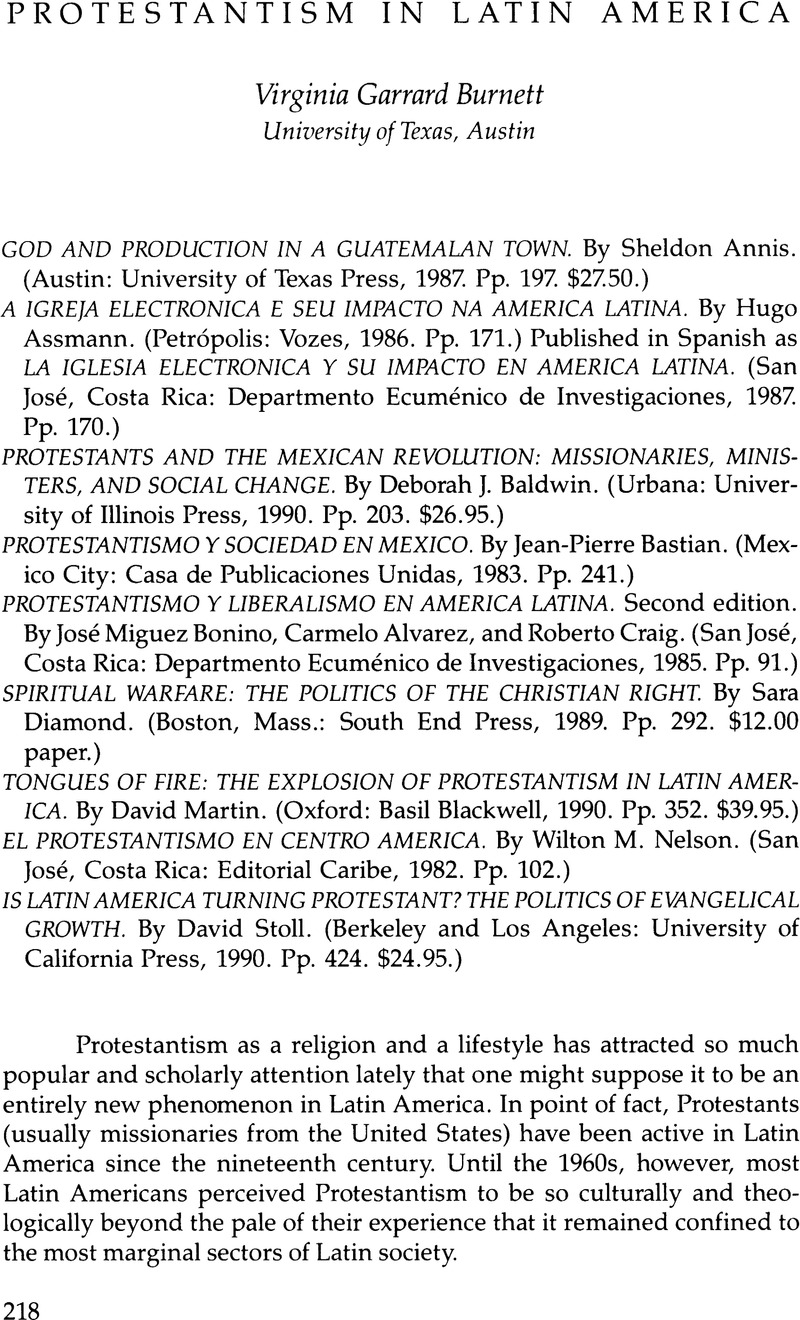Published online by Cambridge University Press: 12 October 2022

1. Many of the commonly cited statistics on Protestant growth in Latin America are compiled by the Servicio Evangélico para America Latina (SEPAL), a Protestant-sponsored research organization that has attempted to collect scientific data on evangelical growth since 1980. SEPAL's methodology is derived from a research design explained in World Christianity: Central America, edited by Clifton Holland (Monrovia, Calif.: Missions Advanced Research and Communications Center, 1981). This methodology has recently come under fire from some academic and church scholars, who suggest that the statistics for Protestant growth may be inflated.
2. See Christian Lalive d'Epinay, El refugio de las masas: estudio sociológico del protestantismo chileno (Santiago: Editorial del Pacífico, 1968); published in English as Haven to the Masses: A Study of the Pentecostal Movement in Chile (London: Lutterworth, 1969). See also Emilio Willems, Followers of the New Faith: Culture Change and the Rise of Protestantism in Brazil and Chile (Nashville, Tenn.: Vanderbilt University Press, 1967).
3. José María Ganunza, Los sectas nos invaden (Caracas: Edicones Paulinas, 1978); Antonio Quarranciono, Sectas en América Latina (Guatemala City: Consejo Episcopal Latinoamericano, 1981); and Mildred Spain, And in Samaria: A Story of Fifty Years' Missionary Witness in Central America, 1890–1940 (Dallas, Tex.: Central American Mission, 1940).
4. Max Weber stated this argument most succinctly in The Protestant Work Ethic and the Spirit of Capitalism (New York: Charles Scribner's Sons, 1958).
5. Willems, Followers of the New Faith, 13.
6. Ibid., 95.
7. David Stoll, Fishers of Men or Founders of Empire? The Wycliffe Bible Translators in Latin America (Cambridge, Mass.: Cultural Survival, 1982).
8. Two obvious exceptions are Guatemala, where some evangelicals actively assisted General Ríos Montt's right-wing regime, and Nicaragua, where key Protestant sectors lent their support to the Sandinistas. In both cases, it can be argued that evangelicals were following the biblical injunction to “submit to the authorities in power” (Romans 13:1).